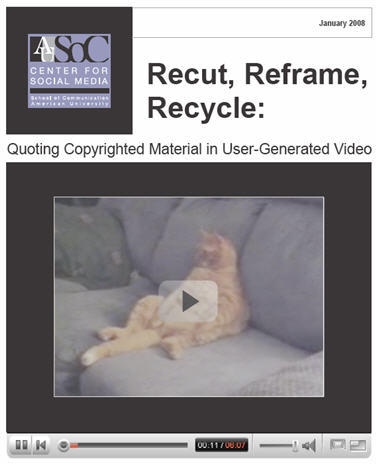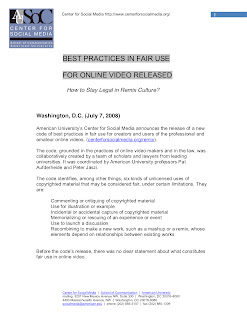 Map Mashups for Strategic Communicators
Map Mashups for Strategic Communicators
Map mashups have revolutionized online mapping and they are on the way to revolutionize the world of public communication. A map mashup is a social media Web application that enables creation and rendering of interactive maps with integrated customized external data. It takes content from many different sources, combines them, and merges these structures into one coherent multimedia whole. The result is a hybrid which is a whole new genre with a huge potential usage in different industries (travel, real estate, politics, entertainment, social networking, healthcare, education, etc.).
The first instances of map mashups were not social enough because they did not allow users to add or edit existing “mapped” data. Chicago Crime Map, for instance, did not allow its users to comment on or chat about crimes. The latest versions, however, have become more refined because Application Programming Interfaces (API) developers made it possible to build up sustainable, enjoyable, online social interactions. The map mashups now are truly social because they allow collaboration and syndication of mapped content.

The development of the new map mashup (or geo-mashup) genre has enabled and initiated a growing trend of citizen, amateur cartography. Many people today, thanks to a widely available user-friendly APIs, are creating map mashups or uploading photographs from GPS phones that can be added to collaborative online mapping sites. Practicing this strategy is becoming increasingly popular and communication professionals should embrace it to enrich their online strategies.
One good example of map mashup developed by adding to Google Maps data from Flickr, WeatherBug, Wikipedia, Eventful, Google Friend Connect, and even more, is MapDango.com. It is an extensive Google Maps travel mashup that lets you explore locations and travel information (after entering a zip code) with added information such as weather (WeatherBug), photos (Flickr), facts (Wikipedia), events (Eventful), news (Google News) and, recently added, Google Friend Connect. Thanks to the presence of so many social features, every registered user can add comments to and review their favorite places as well as upload and share their pictures from the locations.

From the communication standpoint, this application provides an optimal online platform to present travel data in a new, engaging, and visually compelling way. It is a convenient channel for reaching and connecting with niche audiences by creating an online social hub. The “Be Social” option, which allow users to comment and add their reviews of the locations, gives professional communicators an opportunity to get and stay connected with their audiences, listen to them, and respond to their suggestions. This is also a free, constantly updated, online survey of the targeted travel publics. Moreover, there is a “mapdangito” (little MapDango), a portable widget that can be embedded on one’s Web site or blog sidebar. This means a possibility to spread your client’s data virally and reinforce its online presence.
New mapping tools can also be a powerful force for advocacy, social change, and even fundraising. One great example of strategically used map mashup to promote a cause is Stopnewnukes.com. This is an education/advocacy project to raise awareness of the impact of nuclear weapons as well as to call people to action and ask for donation. This map mashup combines Google Maps with Flickr photos of various nuclear hazards, and mashes them with background information on the danger of nuclear weapons. By clicking on the map pushpins, users are instantly redirected to the organization’s Web site with additional data. In the same way, users can upload printable posters. This is a new form of online outreach and a powerful tool to engage and mobilize people. The Peace Education Fond (PEF) has increased the number of visitors on its Web site, many of them coming from the Stopnewnukes mashup site. Users’ meshup posts to StumbleUpon (and to the other bookmarking sites) contributed greatly to the increase of PEF Web site’s traffic and raised the visibility of the organization’s cause.

Another good example of an effective usage of map mashups to tell the story in a new, refined way is Mibazaar.com. It presents US Presidential candidates by combining data and multimedia from Google Maps, YouTube, and Google news feeds for each candidate, in addition to their basic bio facts. It is a new map mashup, uploaded on May 27, and it will surely be virally spread in the future.
As this example shows, when used in political arena, map mashups can provide professional communicators new ways to tell the story and, what is more important, to tell it in an interesting and visually effective way. Given that we live in an information saturated world, map mashups with their capacity to accumulate multiple layers of data, and often, multimedia data formats into one coherent whole, prove to be useful and time-saving tools. Instead of browsing endlessly in order to gather scattered facets of the story, users now are getting centralized patchwork content. What is more important, a Google survey has shown that 80% of all data can be easily presented in the form of maps. And it means a huge possibility for strategic communicators.

These are only a few examples of many possible usages of map mashups for strategic communication. With flourish of micro-blogging tools and their incorporation in maps to create real-time map mashups, such as this Live Disney map (Twitter lifestrem and Flickr pictures mashed with the locations of Disney’s visitors), maps have become more dynamic and even alive. This is a new way how data is used and presented. Many maps are even made portable—users can take them in the forms of widgets or badges (like the “mapdangito”) and embed them to their own Web sites, which adds a powerful viral capacity to their value.
The future of the online communication has been changed with map mashups applications and communicators need to embrace these trends and use them strategically and creatively in their communication campaigns.



















































